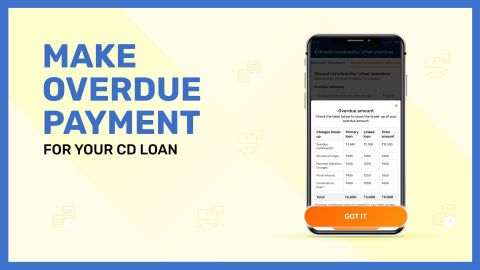If you’ve taken a Loan Against Securities (LAS)—leveraging your shares, mutual funds, or bonds for quick credit—timely repayment is crucial. But what happens if your Equated Monthly Installment (EMI) or interest payment bounces due to insufficient funds? That’s where ECS (Electronic Clearing Service) return charges come into play. When an automated payment fails, banks and lenders impose ECS return charges as a penalty, and these can vary based on the financial institution and the number of failed attempts. On average, charges can range from ₹200 to ₹750 per bounce, and repeated failures could impact your credit score and trigger penal interest rates. Knowing these details can help you avoid unnecessary costs and maintain a healthy loan track record. Whether you’re an investor or borrower, understanding the full scope of ECS return charges on LAS ensures smarter financial planning and avoids unpleasant surprises. Let's explore everything you need to know.
What causes ECS returns in loan against securities?
An ECS (Electronic Clearing Service) return occurs when a scheduled payment, such as an EMI or interest payout on a Loan Against Securities (LAS), fails to go through your bank account. This failure, commonly known as a bounce, can lead to penalties, strained lender relationships, and a dent in your credit score. Understanding the causes behind ECS returns can help you avoid these financial setbacks.
1. Insufficient balance in bank account
The most common reason for ECS return is an insufficient balance in your linked account at the time of auto-debit. If the required amount isn’t available on the scheduled date, the transaction gets declined, and ECS return charges are applied.
2. Incorrect bank details
Entering the wrong account number, IFSC code, or providing outdated bank account information can result in ECS failure. Even a small error in your mandate form can trigger a return.
3. Account closed or dormant
If the account linked for ECS payments has been closed, dormant, or put on hold by the bank due to inactivity or other reasons, ECS transactions will not be processed successfully.
4. Signature mismatch or mandate issues
When your ECS mandate form has a signature mismatch or hasn’t been properly validated by the bank, it could cause return failures. Similarly, incomplete or unauthorised mandates are also common reasons.
5. Technical or network errors
Banking systems rely on real-time connectivity. Sometimes, server downtime, technical glitches, or network issues during the processing window can cause ECS failures.
6. Exceeding transaction limits
Some bank accounts or cards may have a daily debit limit. If the loan EMI or interest payment exceeds that limit, the transaction will bounce.
Preventing ECS returns not only saves you from paying hefty penalty charges (ranging from ₹200 to ₹750 per bounce) but also helps you maintain a clean repayment history. By monitoring your account balance, verifying mandate details, and ensuring timely fund availability, you can avoid these disruptions and keep your Loan Against Securities running smoothly.
How to resolve ECS returns on your loan against securities?
ECS returns on your Loan Against Securities (LAS) can lead to penalties, loan default status, and even affect your credit score. If you’ve encountered an ECS bounce, it’s important to act quickly and resolve the issue. Here’s how you can handle it effectively:
Contact your bank for solutions
Initiate immediate communication
Get in touch with your bank or lender as soon as you receive a notification of an ECS return. Immediate action can prevent further charges or legal complications.
Request details of the failed transaction
Ask for the exact reason for the ECS return—whether it’s due to insufficient funds, technical errors, or incorrect details. This helps in identifying the right course of action.
Negotiate penalty waivers (if applicable)
Some banks may consider waiving ECS return charges for first-time offenders or long-standing customers. It’s worth discussing with your relationship manager.
Check for multiple bounces
If multiple ECS attempts have failed, confirm with your bank if they plan to retry the transaction. Ensure your account is funded before the next attempt.
Ask for alternative payment options
Request if you can make the payment manually via NEFT, RTGS, UPI, or cheque to clear the dues and prevent additional penalties.
Correcting insufficient funds or account details
Ensure sufficient balance
Maintain an adequate balance in your linked bank account before the ECS debit date. Set reminders or enable alerts for low balance to stay updated.
Update account information
If your bank account has changed, or if there was an error in your ECS mandate (like wrong account number or IFSC code), submit a fresh mandate with updated details.
Fix signature or mandate issues
In case of a signature mismatch or incomplete ECS mandate, re-submit the correct documentation as advised by your bank or lender.
Close dormant or unused accounts
If the ECS was linked to a dormant or closed account, transfer the ECS mandate to an active account.
Set up auto-debit carefully
Always double-check the ECS setup when initiating the loan to avoid future errors.
By proactively resolving ECS return issues, you can maintain a good repayment record and avoid disruptions in your Loan Against Securities.
Legal implications of ECS return charges
An ECS return on a Loan Against Securities (LAS) is more than just a financial inconvenience—it can have serious legal consequences if not addressed promptly. Understanding the legal implications can help you stay compliant, avoid penalties, and maintain a healthy credit profile. Here’s a breakdown of the potential legal outcomes associated with ECS return charges:
Breach of loan agreement
When an ECS return occurs, it may be treated as a breach of the loan terms outlined in your agreement. Lenders can legally take action if repeated defaults are observed.
Levy of penalty charges
Each ECS return attracts a penalty, usually between ₹200 to ₹750. Non-payment of these charges can be added to your outstanding dues, leading to compounding interest or legal escalation.
Impact on credit score
ECS bounce incidents are reported to credit bureaus. Frequent returns lower your credit score, which may affect your ability to secure future loans or credit cards.
Legal notice from lender
Repeated ECS failures can prompt lenders to issue a legal notice demanding immediate repayment. Ignoring such notices can escalate the situation into court proceedings.
Possibility of cheque bounce case under section 138
In some instances, ECS returns are treated similarly to a cheque bounce, especially when accompanied by dishonored standing instructions. Under Section 138 of the Negotiable Instruments Act, this can lead to criminal proceedings.
Recovery through arbitration or court
If the default continues, lenders may initiate recovery through arbitration, or file a case in a civil court. This process may also involve asset seizure, including your pledged securities.
Loss of collateral
Since the loan is secured against your securities, multiple ECS bounces could result in the lender selling off your pledged shares or mutual funds to recover dues.
Ineligibility for future loans
Continuous ECS defaults might mark you as a high-risk borrower, affecting eligibility for personal loans, business loans, or even LAS renewals.
To avoid such legal risks, ensure timely payments using secure methods like the ECS payment mode or settle dues through bajaj Finance quick payment options available in your account dashboard. Being proactive helps you stay legally compliant and financially secure.
Conclusion
In conclusion, managing your Loan Against Securities (LAS) responsibly is essential to avoid the financial and legal consequences of ECS returns. From understanding the causes of ECS failures to taking timely corrective actions and being aware of the legal implications, every step plays a role in maintaining a healthy loan record. By ensuring sufficient funds, keeping your mandate details accurate, and using reliable options like ECS payment mode or Bajaj Finance quick payment, you can safeguard yourself from penalties, credit score damage, and legal troubles. Stay proactive and protect your financial well-being.
Loan support made easy—read on
Loan Against Securities Disbursed But Amount Is Not Credited |
||||




